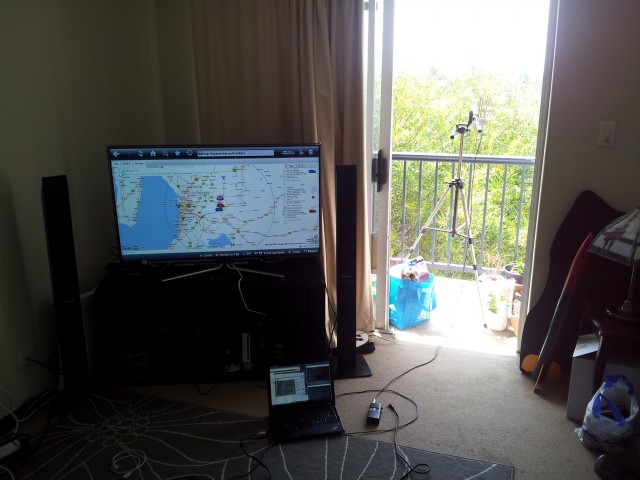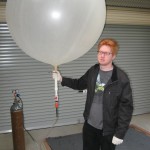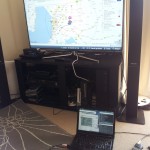Horus 17
Technical information:
| Launch date | 16/10/2011, 10:14 am |
| Landing date | 16/10/2011, 10:55 am |
| Flight duration | 41 minutes |
| Launch site | -35.1020, 138.8253 |
| Landing site | -34.9131, 139.2111 |
| Flight path | В Web, KMZ |
| Distance travelled | 40.9 km |
| Maximum altitude | 9,303 m |
| Average ascent rate | 7 m/s |
| Impact speed | 5 m/s |
| Flight computer | MicroNut Flight Computer |
| GPS module | uBlox 6 NEO-6Q + Sarantel GeoHelix antenna |
| Radio transmitter | Radiometrix NTX2 25mw |
| Telemetry | 300 baud RTTY, CRC16 checksum |
| Tracking | Ground stations (distributed listener), 2 chase cars, web based tracker |
Details:
Horus 17 was a test of a new 'Pico' payload - an extremely lightweight version of Mark's MicroNut design. Our lightest payload yet, it tipped the scales at just over 47 grams. In order toВ achieveВ such a light payload, sacrifices had to be made, with thermal insulation being virtually scrapped. It was hoped that this flight would highlight any issues we might encounter with the payload in future flights.
Preparation and launch:
Given the tiny payload & purpose of this launch (essentially a test), a small balloon was used which made for hassle free filling. The new MicroNut boards feature uBlox 6 GPS modules whichВ acquireВ lock very quickly even from a cold boot - the payload took only seconds from being switched on to havingВ acquiredВ lock and transmitting valid telemetry.
With the short predicted flight duration, one car was sent ahead in advance before the balloon was launched. After about a 15 minute head start, the balloon was released in blustery conditions.
Flight & recovery:
Initially the flight appeared to be going as planned - a slightly higher than planned ascent rate of 7m/s would mean a reduced maximum altitude, but this was perfectly acceptable. However, after reaching only 9.3km the balloon burst - over 10km short of the anticipated 20km altitude. It's possible that the windy conditions and short payload tether used resulted in the payload swinging enough to hit the balloon & rupture it, ending the flight prematurely.
Fortunately we had a chasecar nearby at the time of burst & we were able to recover the payload with minimal difficulty - it landed in field beyond a ridge of hills, which made decoding it's exact position from the road difficult. The payload was retrieved by means of radio direction finding with a handheld yagi & receiver.
Despite the lowВ altitudeВ achieved, the flight was a success, proving the lightweight payload's capabilities. One of our regularВ team membersВ wasn't able to make it for the day, but he was able to help out by decodingВ telemetryВ from home back in Adelaide (and following the chase on the largest tracker display we've used to date).
Many thanks to those who helped out with tracking on the day, as well as VK5ZT, VK5ZD & VK5ACY for coming out & meeting us after the recovery. ![]()









